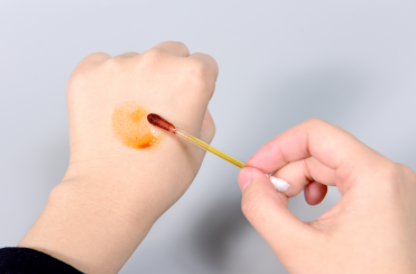In daily life, the skin will inevitably be subject to some wear and tear, such as abrasions. Abrasions, usually caused by skin rubbing against a rough or hard surface, can cause discomfort such as redness, swelling, pain, and burning. Although these scrapes may look uncomfortable, in most cases they are not cause for concern.
When a bruise occurs, first, we need to assess the severity of the wound. If the wound does not stop bleeding or if something penetrates the skin, seek professional medical help immediately. If the wound is superficial, simple home care can be performed.
Stop bleeding:
For minor bleeding wounds, what we need to do is to stop the bleeding. This can be accomplished by pressing sterile gauze directly onto the wound and holding it firmly with the palm of your hand. If the gauze becomes soaked with blood, simply add another layer on top without replacing it. When bleeding stops, continue to apply pressure for a minute or two to ensure hemostasis.
Clean the wound:
Cleaning the wound is the first step in home care. Before cleaning the wound, remember to wash your hands with soap and water to prevent bacterial infection. Gently wipe the wound with a iodophor cotton ball; avoid using hydrogen peroxide or alcohol as they may irritate the wound. The wound is then covered with a clean dressing. It is worth mentioning that hydrocolloid dressings are a very practical option and can be used for many days without affecting daily bathing. Hydrocolloid dressing can provide the wound with a slightly acidic closed space that is conducive to wound healing, keeps the wound moist, and promotes healing. While the wound is healing, avoid overusing the injured area and allow it adequate rest.
Care tips:
1. Avoid scratching or picking at scabs. Scabbing is part of the natural healing process and helps protect the wound from outside contaminants. Even though it may feel itchy, it's important for your child to refrain from scratching.
2. Quitting smoking and limiting alcohol consumption is critical for wound healing, as both smoking and drinking delay the wound-healing process and reduce the body's ability to fight infection.
Depending on the depth and size of the wound, the treatment process may vary. Small wounds on the epidermis only need to be stopped, rinsed, and covered. Deep wounds require more attention and careful treatment, including steps such as hemostasis, irrigation, suturing, and covering. For wounds with deep damage to the dermal layer, there will be more bleeding and longer pressure will be needed to stop the bleeding.
The key to proper wound management is understanding the wound healing process and taking appropriate cleaning, hemostasis, and dressing measures. At the same time, avoiding unnecessary stimulation and maintaining good living habits are also important factors in promoting wound healing.
For more information on Innomed®Hydrocolloid Dressing, Refer to the Previous Articles. If you have customized needs, you are welcome to contact us; You Wholeheartedly. At longterm medical, we transform this data by Innovating and Developing Products that Make Life Life easier for those who need loving care.
Editor: kiki Jia
Date: February 20, 2023

 English
English عربى
عربى Español
Español русский
русский 中文简体
中文简体








